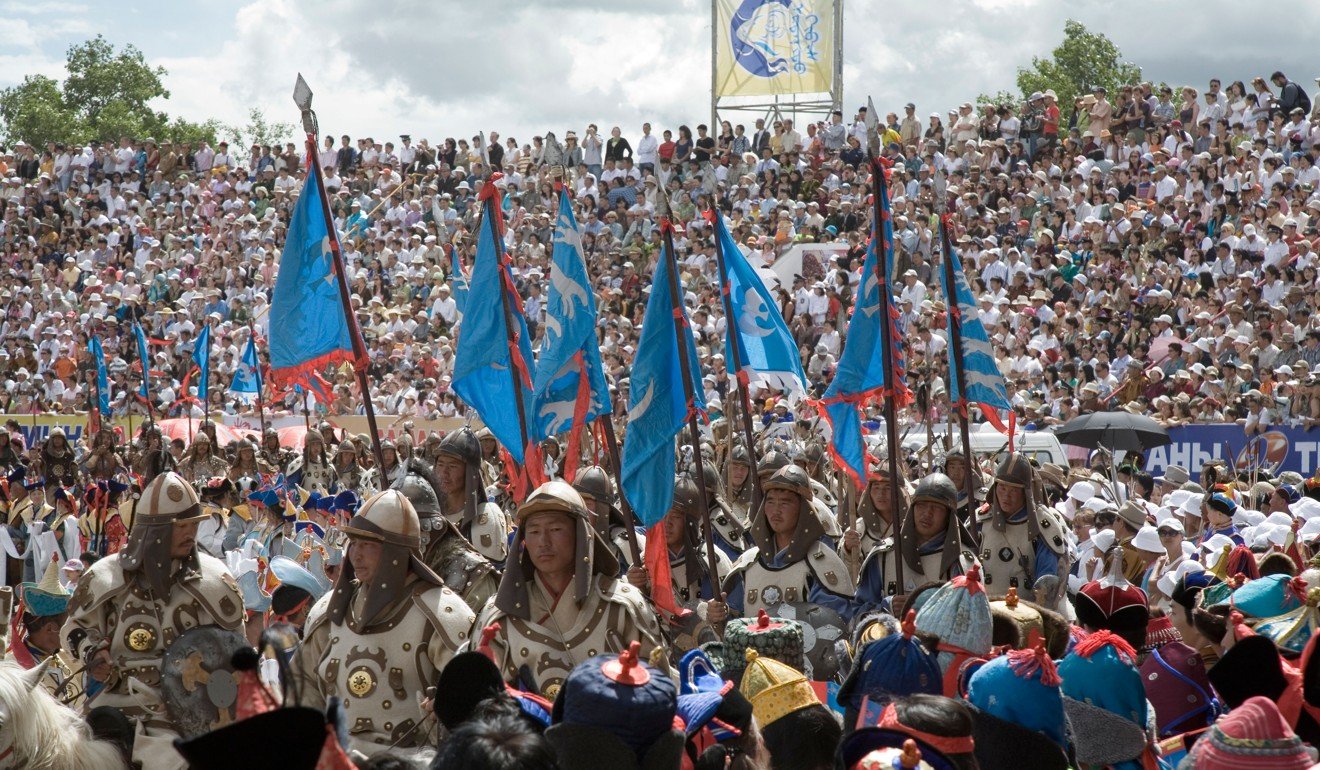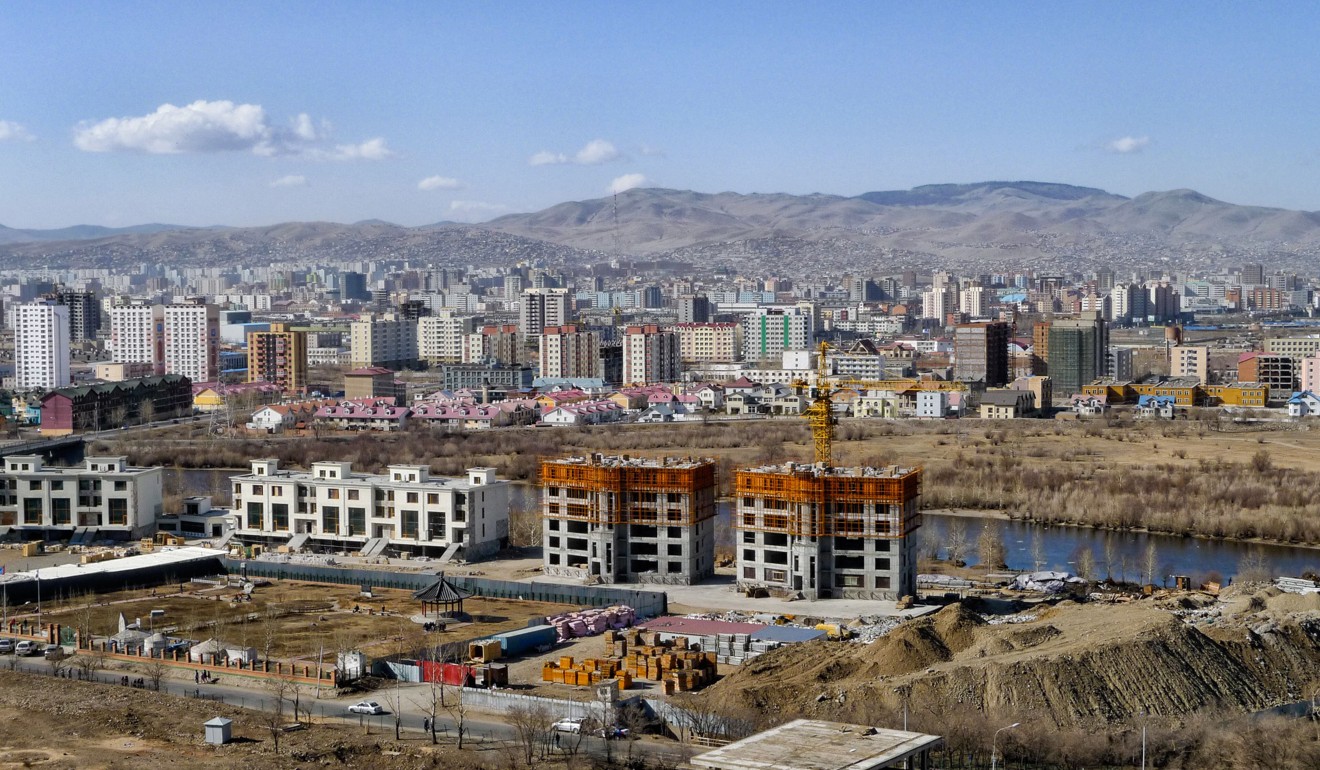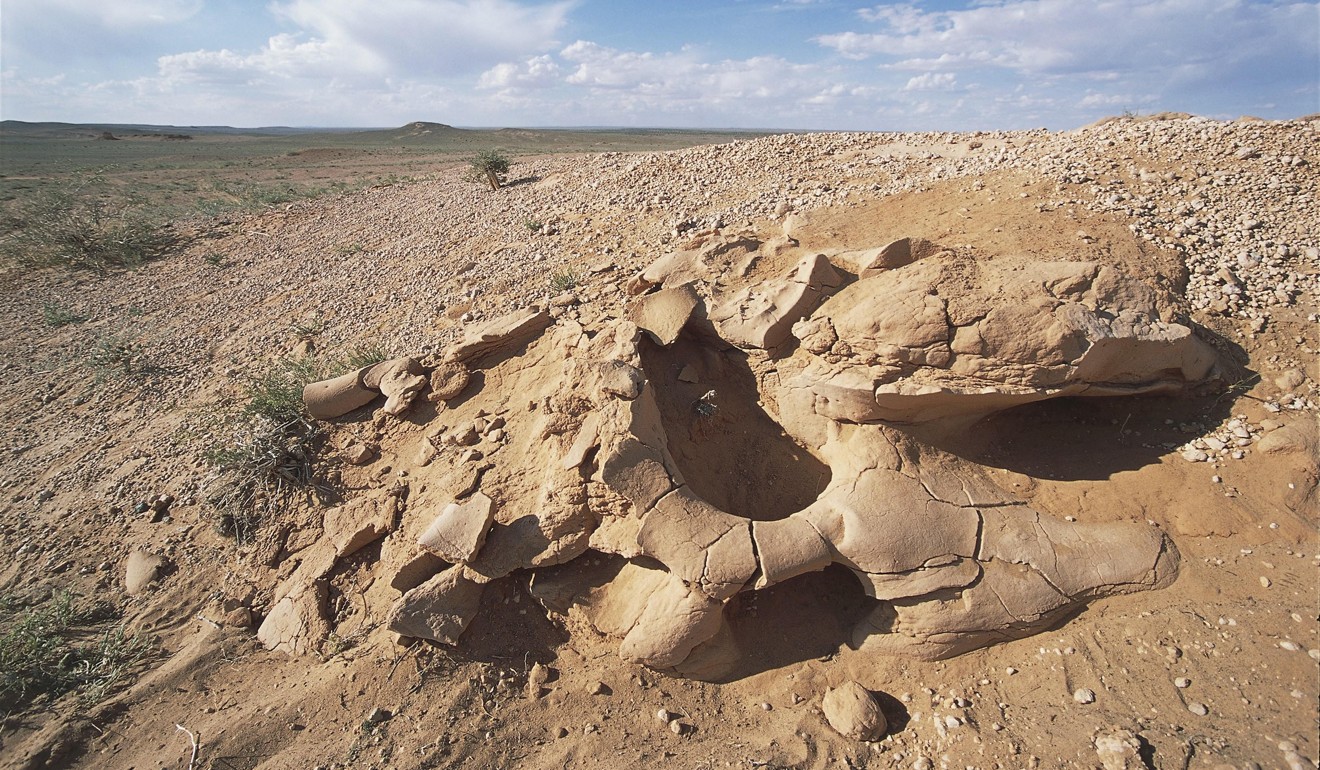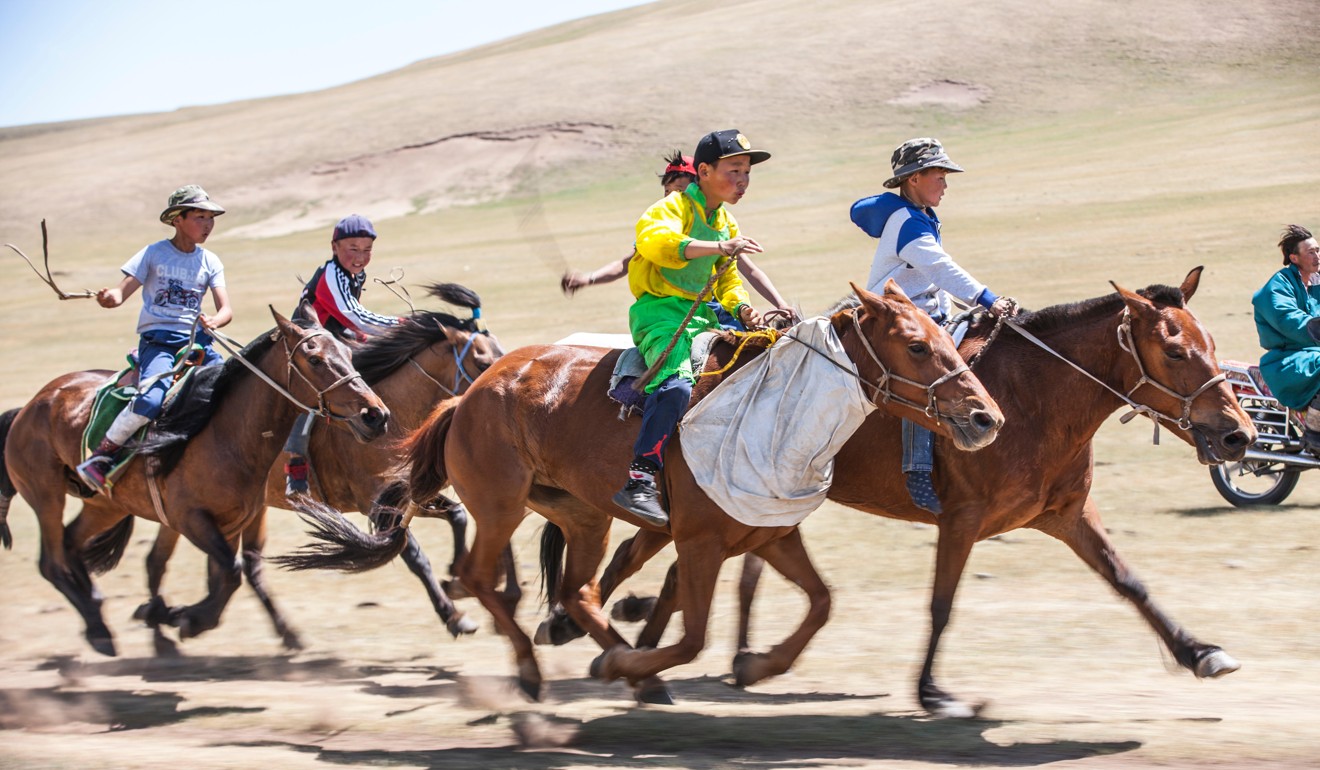
Mongolia: the good, bad and ugly sides for visitors to the Land of the Eternal Blue Sky
From wandering nomads to the summer festival of Naadam, Mongolia has much to offer, just remember to mind your manners and leave the dinosaur fossils where you find them
The Good
The Asian country, bordered by China and Russia, comes to a standstill during the “the three games of men”, which date back to ancient times, when warlords encouraged competitive sports to toughen men up in readiness for military service.
The event, or more accurately events (hundreds of Naadams take place across Mongolia), which this year started on Wednesday and ends today, provides competitors with the opportunity to demonstrate their prowess at wrestling, archery and horse racing.
The games are also a chance for spectators to see and be seen. Dressed in traditional clothing, nomadic herdsman and city slickers alike meet up with old friends, tuck into tsuivan noodle stew and deep-fried khuushuur dumplings, and enjoy a glass or two of airag, a fermented horse-milk beverage that packs a hefty punch.
Mongolia is making ancient herding turn modern profits
To get a feel for the atmosphere, catch the opening ceremony and wrestling competition at the largest and most prestigious Naadam, which takes place in the 12,500-seat National Stadium in Ulan Bator, the Mongolian capital, then arrange to visit a provincial town or village to experience a more intimate version of the festivities.
The horse races are spectacular – young boys (and some girls) compete over distances of up to 30km, urging their mounts to ever greater performance amid clouds of dust.

From Hong Kong, the easiest way to Ulan Bator is by flying to Chinggis Khaan International Airport. A new airport is scheduled to open next year, allowing the landlocked nation to further develop its potential as an adventure-tourism destination.
Alternatively, to see something of the dramatic landscapes, travel up on the Trans-Mongolian Railway from Beijing, 30 hours to the south.
“UB” merits at least a day’s sightseeing with its schizophrenic mix of shiny skyscrapers and dreary Soviet blocks. At the centre of Sükhbaatar Square stands a bronze likeness of Mongolian independence icon Damdin Sükhbaatar, his arm raised, as if directing the (ever-increasing) traffic.
Nearby is a statue of national hero (or ruthless conqueror, depending on your point of view), Chinggis (Genghis) Khaan, the man who founded an empire on horseback.
The original Belt and Roader is central to Mongolia’s goal of hosting 1 million foreign tourists by 2020. “Following the Footsteps of Genghis Khan” horse treks, “Genghis Khan Trail” motorcycle tours, “Gobi Desert Grasslands” cycling trips and an assortment of dinosaur expeditions all offer a rewarding glimpse of a country overlooked by many travellers.
The local proverb, “Man’s joy is in wide-open and empty spaces”, is certainly apt. With only 1.4 people per square kilometre, Mongolia is one of the world’s least densely populated countries (arranging for a family from Mong Kok – one of the world’s most densely populated suburbs – to spend a week living in the Gobi Desert while a family of nomads set up home in a Kowloon tower block would make for an interesting television documentary).
Mongolia is the anti-Hong Kong. We live in the world’s most vertical city; Mongolians live in portable yak-skin gers (don’t call them yurts; that’s the Russian word). Horses are a symbol of the Buddhist nation’s cultural identity and children learn to ride before they can walk (you don’t often see commuters clip-clopping along Queen’s Road Central).
The Land of Eternal Blue Sky averages 260 cloudless days a year and many families have livestock herds of at least 300 animals. Nomads living on the steppes of Central Asia consider the limitless landscapes and vast skies to be sacred. Hongkongers regard Louis Vuitton and Gucci in much the same way.
The Bad

Sprawling, unregulated ger and shack encampments on the city fringes are home to hundreds of thousands of impoverished migrants in search of work and warmth. To keep the chill at bay, people who can afford it buy coal while those who can’t burn rubbish and old tyres. Pollution levels have been measured at five times those recorded in Beijing. So much for all the cloudless days!
Alcohol is another way marginalised migrants keep warm. Enjoying a glass of airag during Naadam is one thing, but the collapse of communist-era safety nets has led to social upheaval and widespread unemployment, which, combined with an abundance of cheap liquor, has created an alcoholism epidemic. Encountering an aggressive drunk is one of the few risks a tourist might face in what is generally a safe country to travel around.

Described as the largest dinosaur fossil reservoir in the world, the Gobi Desert attracts criminals in search of rare and valuable prehistoric finds. Last month, a man was arrested in Ulan Bator for the illegal possession of an 80-million-year-old protoceratops fossil that he planned to sell.
Officially, fossils can’t be exported or sold to non-Mongolians, despite growing demand from private collectors, including Hollywood star Nicolas Cage, who, on discovering that a skull he had bought had been illegally smuggled out of Mongolia, agreed to return the relic. Join a dinosaur expedition if you fancy yourself as a palaeontologist but think twice before smuggling any bones out with your duty-free bottle of airag.
Dinosaur hunting in Inner Mongolia: Gobi Desert a treasure trove for University of Hong Kong-led expedition
Mongolians are superstitious people and never more so than at home. Visiting a family ger means memorising a checklist of dos and don’ts. If you happen to spot a shooting star trailing across the sky, don’t mention it to anyone – they are seen as an omen of death. And be sure not to whistle when inside the circular dwelling as your hosts believe this could trigger a natural disaster. When, during a ger visit some years ago, the head of the household told me he had 12 children, I puckered up without thinking and gave my best “Wow, how impressive” whistle. I haven’t been invited back.
The Ugly

Mongolian horse races are run over huge distances and yet some riders are so tiny they need to be lifted into the saddle. The youngsters, some only five years old, don’t always wear helmets or protective gear. Between 2013 and 2017, 1,500 child jockeys were injured and 10 died in horse races, according to figures from Mongolia’s National Traumatology and Orthopaedics Rehabilitation Centre.

